蕭錫惠 | Hsiao Hsi-hui
安靜的慈善革命:麥肯錫·斯科特改寫富豪遊戲規則
逆流而行:當財富選擇靜默
世人總是好奇,億萬富豪如何揮霍財富:豪宅、遊艇、私人飛機,甚至排場盛大的慈善晚宴。亞馬遜創辦人貝佐斯的前妻──麥肯錫·斯科特,卻選擇走出另一條截然不同的道路。
亞馬遜創辦人貝佐斯的前妻──麥肯錫·斯科特,卻選擇走出另一條截然不同的道路。 2019 年離婚後,她分得 380 億美元。短短四年,她已捐出超過 140 億美元,資助超過 1,600 個組織。捐款之快、規模之大,堪稱史上罕見。 三個動作,打破金錢的幻象 不同於多數富豪熱衷的「遊戲規則」,斯科特徹底去明星化:她不成立基金會、不出席論壇,更不要求冠名。
她只做三件事:
捐得大:一次到位,減輕組織生存焦慮。
捐得快:不讓資源卡在冗長程序。
捐完即退:轉身離開,把舞台留給行動者。
這種直接而果斷的做法,挑戰了傳統慈善的根深柢固模式。 信任,是最昂貴也最珍貴的禮物 更令人驚訝的是,她的捐贈幾乎沒有附加條件。
受惠的往往是難以吸引財團目光的基層團體:社區大學、食物銀行、種族正義組織、婦女庇護所。她相信,這些在地行動者,比億萬富豪更清楚資源應該花在哪裡。這份信任,正是她慈善革命的核心。
華麗的慈善與真實的需要 傳統慈善常淪為形象工程:冗長申請、繁瑣審核、冠名大樓,資源因此被消耗在行政與包裝,而非迫切需求。斯科特則恰好相反──她簽完支票就離開,讓受贈者能專注於真正的工作。她證明,改變生命,不必靠華麗秀場;真正的影響力,來自單純的信任與即時行動。
2019 年離婚後,她分得 380 億美元。短短四年,她已捐出超過 140 億美元,資助超過 1,600 個組織 給台灣的一面鏡子 在台灣,慈善往往被包裝成政治或商業的延伸:捐款成了關係網絡的一環,公益有時淪為形象或權力的裝飾。斯科特提醒我們,最有力的給予,並非舞台上的聚光燈,而是對真實需求的敏銳理解與毫無保留的支持。
靜默中的革命,影響最為響亮 當金錢不再只是炫耀的工具,而能化為推動公平與希望的槓桿,財富才真正展現價值。美國最安靜的億萬富豪,正在發揮最響亮的影響力。這不僅是一場慈善革命,也是一面鏡子,映照出我們對公益與責任的真正想像。
MacKenzie Scott’s Quiet Revolution Is Rewriting the Rules for Billionaires
America is once again debating wealth inequality. Politicians argue over taxing billionaires, critics question whether philanthropy is just reputation laundering, and the public wonders whether extreme wealth can ever serve the common good. Amid this noise, MacKenzie Scott has quietly offered a radical answer.
The novelist and philanthropist—best known as the ex-wife of Amazon founder Jeff Bezos—has become one of the most consequential givers of our time. Since her 2019 divorce settlement, in which she received $38 billion, Scott has donated more than $14 billion to over 1,600 organizations. The speed and scale of her giving are historic.
But the real revolution lies not in the amount, but in the method.
Philanthropy Without Ego
Scott has rejected the usual billionaire playbook. No personal foundation. No naming rights. No gala dinners or conference panels. Instead, she does three things: give big, give fast, and get out of the way.
Each grant is a one-time, transformative sum designed to free nonprofits from survival anxiety. She moves money quickly, bypassing the red tape that keeps resources stuck in committees and endowments. And once the check is signed, she steps aside, leaving the stage to those who actually do the work.
Trust as the Most Radical Act
Most strikingly, Scott’s giving comes with few strings attached. Her beneficiaries are often overlooked groups: community colleges, food banks, racial justice organizations, women’s shelters. She trusts local leaders to know where the money should go—something that many philanthropists struggle to do.
Trust, in this context, is not naïveté but empowerment. By removing layers of oversight and performance metrics, Scott restores agency to those closest to the problem. This is philanthropy as partnership, not patronage.
A Challenge to Traditional Giving
Traditional charity is often more about optics than outcomes: endless grant proposals, PR campaigns, and ribbon-cutting ceremonies that exhaust nonprofits. Scott flips the script. Her giving forces us to ask whether bureaucracy and ego have been holding back real progress.
Her model also highlights a bigger systemic question: if one individual can direct billions in months, why do so many public and private institutions take years to deliver aid?
A Global Mirror
Scott’s approach is a mirror held up not only to American wealth but to societies worldwide. In Taiwan, where I live, philanthropy is frequently entangled with politics and business networking. Donations become a tool for influence and image management. Scott’s example reminds us that the most powerful giving is quiet, humble, and unconditional.
The Loudest Impact Comes From Silence
When wealth stops performing and starts empowering, it becomes a lever for fairness and hope. America’s quietest billionaire may now be the one making the loudest impact. The question is whether others will follow—whether this quiet revolution will remain a singular story or become the new standard for how extreme wealth serves society.
